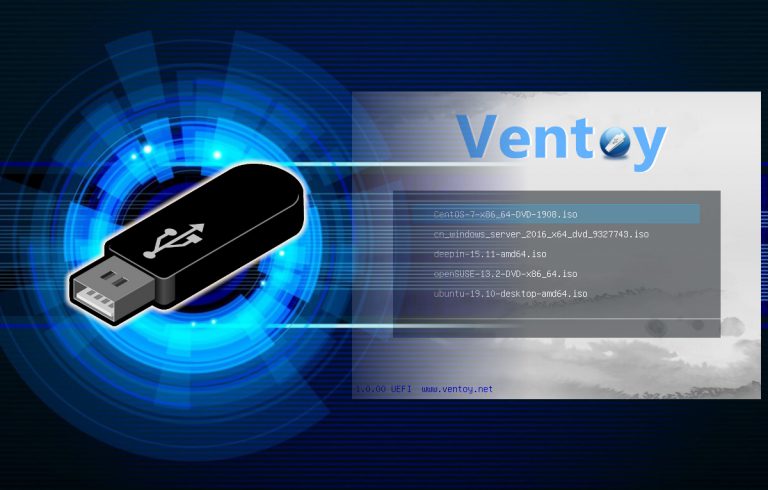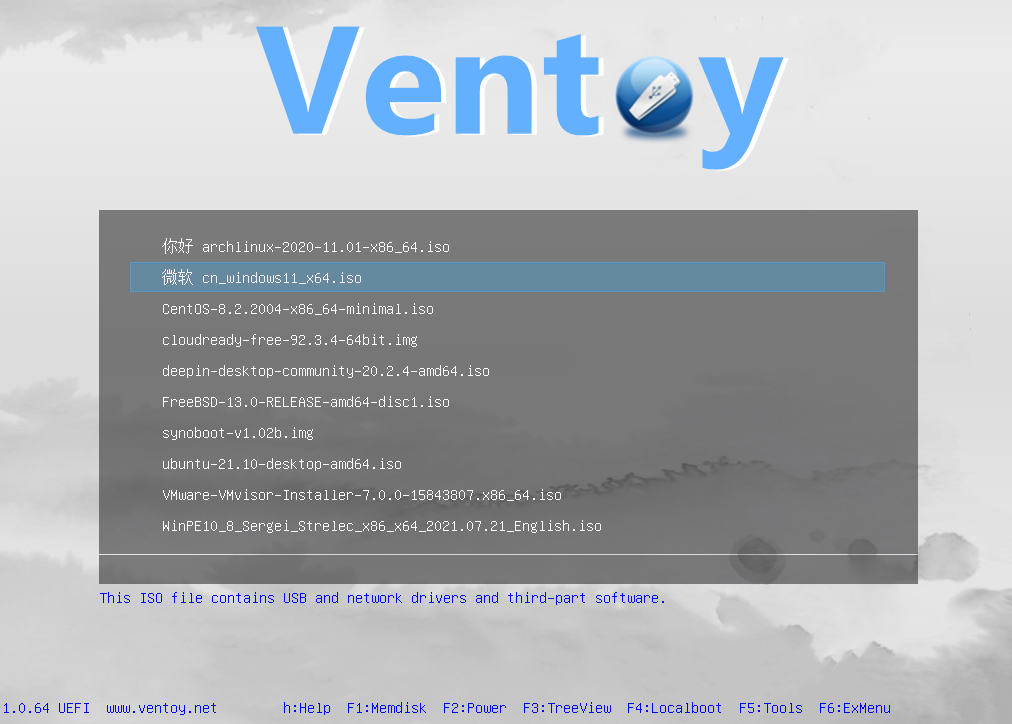

I did at least try with the original BIOS versions prior to updating them and still wouldn't boot from the Ventoy USB, at least not the dc7800. Would've gone for Rufus, mentioned by one of the users as having eventually worked on a dc7800.įiddling with the BIOS is risky and I'm no longer young and eager to experiment. Since my only working machine is running Linux (Mint) it'll be quite hard for me to try all those Windows applications you mentioned. Bad luck? Bad BIOS? Dunno, the guys above seem to have stumbled into the same or similar situation.
#Ventoy for mac software
I haven't, although fixing computer hardware and software has been a hobby of mine for over twenty years. Even so, once in a blue moon someone managed to make it work. The above, found when searching for solutions, are proof that the HP BIOS is badly designed. If they do then you know the problem is not a Ventoy issue but an issue with your PCs BIOSes which you need to try harder to solve. YUMI, Easy2Boot, WinSetupFromUSB, SARDU, etc, and see if they also fail in a similar way. You could also try other types of multiboot sticks (no need to add ISOs) - e.g.

You may also like to rename (temporarily) the \EFI folder on partition 2 of the Ventoy drive to some other name to prevent UEFI booting (e.g. Note that when booting from USB, if legacy booting then I would use an MBR partitioned USB drive not GPT. Disabling and re-enabling the Hard Drive as a boot source, as in the step above, is then required in order to see the USB key in the F9 menu again unplug the USB key, rebooting, then plugging the USB key back in results in the USB key no longer being available in the F9 menu, so not being able to boot off it.

Systems with a 64-bit CPU can have a UEFI32 BIOS or a UEFI64 BIOS.- disable (F5) and re-enabling (F5 again) "Hard Drive" under "Legacy Boot Sources" in the Boot Order seems to make the USB key available as a boot device under the F9 menu But it's not just MacOS installer images though I have a Fedora 37 image on there as well, and that wouldn't boot either (I had used a linux DVD to wipe the drive when I first got the machine, so I know Linux can run on it).
#Ventoy for mac for mac
It was an experiment, I figured it would be handy if I could use Ventoy for Mac as well.

Would have to be uefi64 as it's a 64bit Intel Core 2 Duo. I don't think Mac installer image files are supported by ventoy at all.
#Ventoy for mac iso
If uefi32 then you need Linux uefi32 iso which are quite rare and difficult to find. RE: MacBook boot - Steve2926 - 12-12-2022ĭoes your Mac have a uefi32 bios or a uefi64 bios? Not critical, but I thought it would be handy to troubleshoot/repair Intel-based Mac systems with the same boot tool (Apple silicon will be an entirely different issue). I can understand if this is just unworkable in general, but I had wondered if this has been tried, and perhaps I need to give it different startup/boot options. I tried this with both a BigSur installer image (that works when written directly to a USB on it's own) as well as a current Fedora 37 ISO image (the Cinnamon spin in this case). It did boot the Ventoy USB and showed the list of boot images, but none of them would load.
#Ventoy for mac install
I was experimenting with Ventoy on my MacBook Pro (a mid-2010 model) to see if it could load an install image or live CD from there. +- Thread: MacBook boot ( /showthread.php?tid=2274) +- Forum: Ventoy General Use - Ventoy 使用交流 ( )


 0 kommentar(er)
0 kommentar(er)
